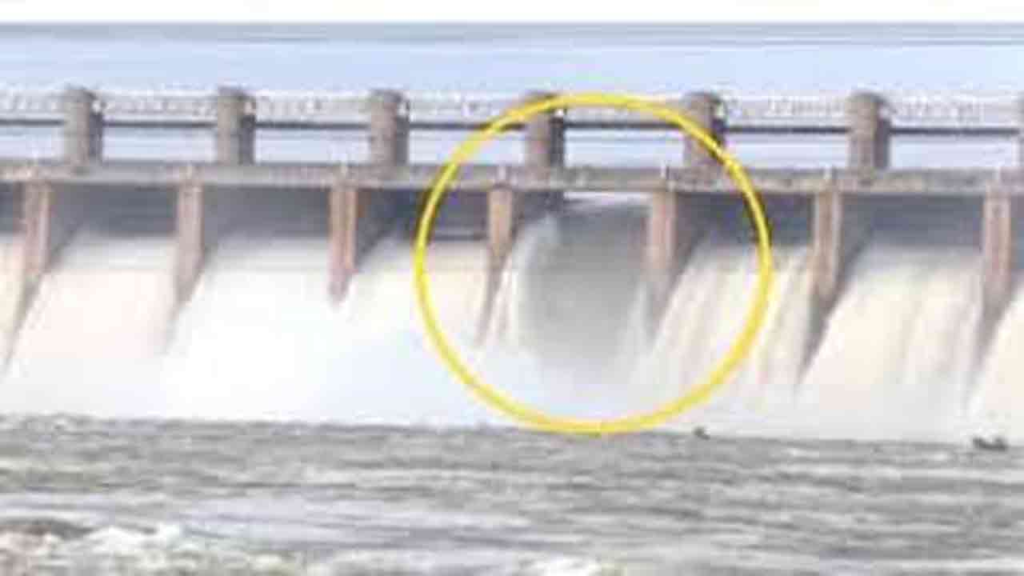The peaceful flow of the Tungabhadra River has been dramatically disrupted following the catastrophic failure of a dam gate on August 10, 2024. This incident has unleashed a flood of concerns, affecting thousands of residents in Karnataka and surrounding regions. The Tungabhadra Dam, a cornerstone of the region’s irrigation and water management systems, experienced a severe breach that has led to immediate emergency responses and long-term strategic planning to mitigate further damage. Here’s a comprehensive account of the unfolding crisis, the response efforts, and the future outlook.

The Catastrophic Failure: How It All Began
On August 10, 2024, residents living near the Tungabhadra Dam were jolted awake by alarming news: one of the dam’s critical gates had been washed away. This gate, crucial for regulating water flow, failed under the pressure of heavy rains and rising water levels. The dam, located near Hospet in Karnataka, is a vital infrastructure piece serving thousands of farmers and communities by managing water flow into the Krishna River.
The initial signs of trouble appeared on August 5, when meteorologists warned of exceptionally heavy rainfall in the region. The downpour, coupled with the dam’s already high water levels, created a precarious situation. By August 7, concerns grew as water levels continued to rise, stressing the dam’s infrastructure.
Timeline of the Crisis
August 5, 2024: Heavy rainfall begins in the Karnataka region. Weather forecasts predict ongoing severe conditions, putting additional strain on existing infrastructure.
August 7, 2024: Authorities issue an advisory warning about the increasing water levels in the Tungabhadra Dam. Emergency preparedness measures are put into effect, but the situation remains critical.
August 9, 2024: The dam shows signs of significant structural stress. The gate’s failure is reported early on August 10, with emergency services mobilizing to address the situation.
August 10, 2024: The missing gate causes an uncontrolled release of water into the Krishna River, leading to immediate flooding in downstream areas. Local and state officials are engaged in rescue and relief operations.
The Impact on Local Communities
The breach has had severe consequences for communities along the Krishna River. Towns and villages in Bagalkot and Raichur districts face substantial flooding. Homes are submerged, crops are destroyed, and infrastructure is heavily damaged.
Anand Rao, a farmer from Bagalkot, shared his distress: “The water came in waves, flooding our fields and homes within hours. We’ve lost everything we worked for, and the government’s support is our only hope right now.”
Expert Analysis and Government Response
Immediate Measures: The Karnataka government, under Chief Minister Basavaraj Bommai, has declared a state of emergency in the affected areas. The National Disaster Response Force (NDRF) has been deployed to assist with search and rescue operations. Temporary shelters and relief funds are being provided to displaced residents.
Expert Opinions: Dr. K. Srinivasan, a hydrologist at the Indian Institute of Science, Bangalore, provided insight into the situation: “The loss of the dam gate represents a significant engineering failure. Immediate repair work is necessary to prevent further complications.”
Dr. Anjali Rao, an environmental scientist from the Indian Institute of Tropical Meteorology, Pune, emphasized the need for improved flood management strategies: “This incident highlights the urgency for advanced flood management systems and regular infrastructure maintenance to handle extreme weather conditions.”
Long-Term Solutions and Future Outlook
In response to this crisis, several steps are being considered to prevent similar events in the future:
- Infrastructure Assessment and Repairs: A comprehensive inspection of the Tungabhadra Dam will be conducted to address any further vulnerabilities. Repair and reinforcement efforts are already underway to restore the dam’s functionality.
- Enhanced Flood Management Systems: Investment in advanced flood prediction and management systems will be prioritized. This includes upgrading weather forecasting technology and developing better flood control measures.
- Community Support and Reconstruction: Continued aid will be provided to affected communities, including financial assistance, temporary housing, and reconstruction efforts.
- Policy Review and Reform: The incident will prompt a review of existing policies related to dam management and flood preparedness. Recommendations will be made for regulatory improvements and increased safety measures.
Conclusion
The Tungabhadra Dam gate failure has triggered a significant crisis, with widespread impacts on communities along the Krishna River. As emergency responses unfold and long-term strategies are developed, the focus remains on repairing the damage, providing support to affected residents, and implementing measures to prevent future incidents. This event underscores the need for robust infrastructure and proactive disaster management to safeguard communities against such severe natural events.
For Regular News and Updates Follow – Sentinel eGazette
External Sources
- NDTV – Tungabhadra Dam Gate Washed Away
- The Hindu – Karnataka Floods Update
- India Today – Expert Opinions on Dam Failures
FAQs
- What caused the Tungabhadra Dam gate to fail?
The Tungabhadra Dam gate failure was primarily caused by the excessive pressure from unusually heavy rainfall and already high water levels. The structural integrity of the gate could not withstand the increased stress. - How has the Tungabhadra Dam gate failure affected local communities?
The failure led to severe flooding in areas along the Krishna River, causing widespread damage to homes, crops, and infrastructure in Karnataka. Many residents have been displaced and are in urgent need of assistance. - What steps are being taken to repair the Tungabhadra Dam?
Immediate repair efforts include reinforcing the dam structure, inspecting and repairing any further damage, and implementing temporary measures to control the water flow. Long-term strategies will focus on improving flood management systems. - Who are the key experts involved in the response to the dam failure?
Dr. K. Srinivasan, a hydrologist from the Indian Institute of Science, and Dr. Anjali Rao, an environmental scientist from the Indian Institute of Tropical Meteorology, are leading the assessment and response efforts. - What are the future plans to prevent similar incidents?
Future plans include upgrading flood prediction technologies, enhancing infrastructure maintenance practices, and revising flood management policies to better handle extreme weather conditions and prevent similar failures.